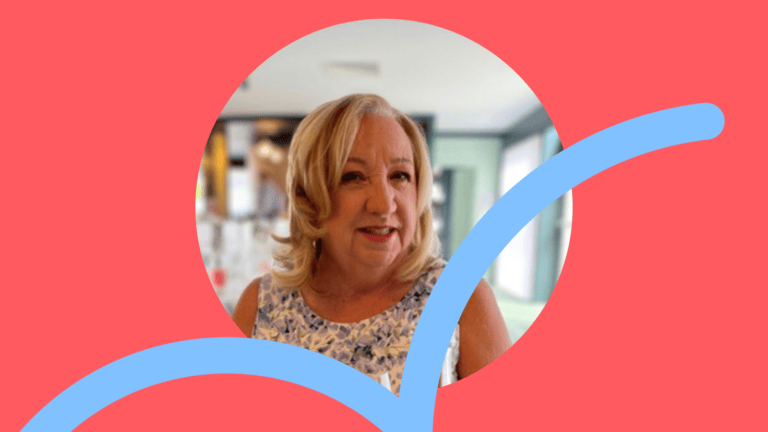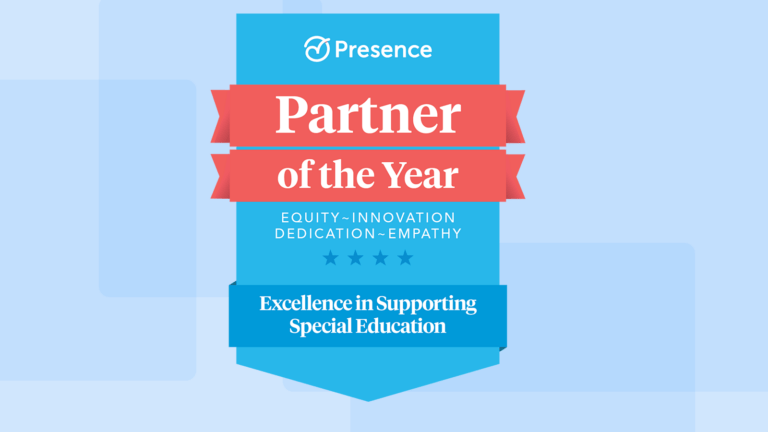

Practicing Teletherapy Since 2017
Introduction
I attended Trenton State College in New Jersey, which is now the College of New Jersey. I completed my undergraduate work and my graduate work there, and I also spent a semester abroad in Leicester, England, at Leicester Polytechnic Institute, which is now DeMontfort University. I completed an undergraduate degree in speech pathology and audiology with a minor in psychology, and then a graduate degree in speech pathology.
I worked in a state school for cognitively-challenged residents, followed by work in public schools for several years. I also worked in private practice. When I retired from the public schools in New Jersey, I went into the world of medical rehabilitation, and treated in skilled nursing facilities.
Fun Fact
I love tennis. My daughters gave me tickets to Wimbledon for my birthday this year. I was able to see Nadal play and the women’s final. It was amazing. Being that I live at the Jersey shore, I really like having summers off and enjoy playing tennis. This works out well with Presence as I am able to play tennis in the morning, and then be online by 11 o’clock.
What inspired you to become an SLP?
I went to speech therapy myself when I was in second grade. I was at a Catholic school and they did not have services, so my mother would come pick me up and take me to a clinic in a neighboring town. I think the whole process intrigued me. I love words, and I love language. So I filed that away. Then in high school, when I was researching what career I might want, I came across Speech Therapy, and it really piqued my interest—I thought it would be something I would enjoy and I do very much, because here I am, still practicing at the age of 65.
You’ve been with Presence since 2017. That’s an early adopter for teletherapy. How did you find your way to Presence?
I went to the American Speech and Hearing Association (ASHA) convention in Philadelphia in 2016. Telepractice appeared to be a burgeoning trend and a way to service students without access to therapists so I attended three or four seminars at the convention, all on telepractice. They spoke about Waldo County Hospital up in Maine being a great training program. So when spring break came in 2017, I went up to Maine to participate in that certification program. Presence was mentioned as being a leader in the field of telepractice and I reached out to them afterwards, just to get a feel for it. And the next thing I knew I had an interview and a job. So everything fell into place.
What do you enjoy about being a provider with Presence?
I find joy in the interaction with the students. I like the one-on-one aspect. I can just concentrate on one student at a time and the gains that they make. That’s very rewarding. Last year I worked with students from the age of five up until the age of 18. I had three different schools—elementary, middle, and high school.
I enjoy the flexibility, sharing methods and materials with 2200 clinicians nationwide, the support, students and staff, and the innovative technology.
What were you most surprised about when you made the transition to be a teletherapist?
When I started in 2017, the ease of students with technology and the degree of connection with students surprised me. The degree of student engagement surprised me. I don’t think I realized how actively the students would be engaged with me.
Then, when COVID hit and students were home due to the pandemic, they were so happy to see me. When it was time to start, they’d be there right on time. I was a voice from the outside so there was a connectivity there. Today, I see them still engaged. There are so many fun activities on the platform. There are always one or two high school students who aren’t particularly keen on attending, but eventually they come around. I try to make it fun. The platform has so many interactive games and they’ll request certain activities. I’m hardly ever absent but if a therapy session gets canceled, they inquire as to what happened—why didn’t we have speech and language—so it’s a very positive experience for me and I hope for the students, too.
What helps you to break through with students who might be dragging their heels or resistant at first?
I try to find out their interests and get a hook in that way. I use humor. I have a joke of the day which sometimes they groan about but they look forward to it. So I just try to make it fun and find out what their interests are. If they’re interested in sports, I’ll do a little research on football. We might talk about some of their favorite players, or how to play the game.
Was there a learning curve for you as you transitioned to teletherapy?
Yes, there was a learning curve. I am still learning every day. I broke the training process into segments over several days, starting in the morning while I was fresh.
Presence has Office Hours. I attended one recently—Fall Frenzy. I was already familiar with a lot of the information, but I always learn something when I attend. The presenter recommended color coding the emails as they come in according to school. So I played with that a little bit, and learned how to do that last night.
You know technology is always changing so otherwise I’d be such a dinosaur. I’m so glad I’ve learned these things.
Could you walk us through your daily routine? A “day in the life of a Presence therapist,” if you will?
I’m working in California so that gives me a lot of time for myself in the morning. I play tennis from 8 to 10 am two to three days a week. I’m up at 5 or 5:30. (I’m asleep by 9 or 9:30.) Before tennis, I grab a coffee and settle in on the couch with my laptop. I plan for about one hour, cutting and pasting my plan for the day from my Google docs into the SOAP notes on the platform. Then I read and respond to emails, I take a break, exercise, and log back in to see students and provide therapy. Then I upload my session notes that are required. Finished!!
How has the Presence platform enabled you to help your students and the schools you serve in new ways?
I am able to use cutting edge technology and interactive methods to engage students. I am able to send follow up activities to teachers and parents instantly. Following the protocol for SOAP notes and the ability to track data in real time on the platform has improved my delivery of services and outcomes.
I get so much done. In one of the Office Hours, one presenter had stated, “Throw away your pens. Just track all your notes right on the platform.” That was life changing. I was taking the notes longhand because I’ve been doing it that way for years and then I would transcribe them. I just lost so much time then. Now when I do it in real time, I’m better able to track the data. I have my notes all in one place, and it’s easier to access and review student progress and what I need to work on when I go to write the goals. Everything’s right there rather than having to cull through piles and piles of monthly behavioral charts and anecdotal notes.
Then, we have the voice recording options. At times, when a child produces a sentence, I’ll repeat it and record it. That enables me to have a language sample rather than having to transcribe the language sample into the notes. For most of the students I don’t have permission to record them. I will just repeat what they’ve said and it will be archived into the notes.
Until this year I had never asked for permission to record a student. But the catalyst was that I had to record in order to do an evaluation of articulation that involved another language. I thought it best to be able to record it, so I could transcribe it later. And then I thought it would work well with another student who wasn’t really aware of her circumlocutions and I thought that might help her.
Can you tell us a little about how you collaborate with teachers and other school staff members?
I communicate through emails, phone, video conferences, as needed. I think in the beginning some teachers don’t really understand the process or how it might work. In those cases, I’ll email them a snapshot of the activity that we did that day, or I might send them pictures of the words on which we worked. That helps. Last year I had one teacher who would work with the student three times a week—he told me, “I know the student doesn’t have the support at home so I’m supporting him in class.” It’s great that they can carry over. I think I get more carry over sometimes because I can just send details through email. I can take a screenshot of what I’m working on in the room right then and there, and then I’ll send it to the teacher later on.
How do you build trust and rapport with parents?
I solicit information from parents and attend all IEP meetings to gain the most information possible for each student. I have access to a lot of the parents’ emails now, and I’ll send them follow up activities and video read alouds. With a couple of parents this summer, I sent home a video every two weeks for them to practice, because they had younger students, and the parents were not proficient with the English language. They seemed to be very appreciative of that.
What has your experience been completing evaluations via the Presence platform? How would you address any hesitation providers or schools might have about this evaluation modality?
The assessments are great. You can access the protocols right there on the platform. I don’t have to pull things up. That’s another time saver —not having to pull your things off the shelves and grab things from your files. Everything’s right there. So I really enjoy the online assessments. There definitely is an initial learning curve as a therapist. But once you’ve presented an assessment a couple of times and have worked through the process, with a little practice, it becomes familiar. And there are always Office Hours to help.
Describe how you work with the Primary Support Person to support your students during therapy sessions and evaluations?
The PSPs have been great, I have all their phone numbers so we text back and forth. I’ll share the schedule with them. If standardized testing or special events are happening at the school, they’ve been very good about letting me know how the schedule will be impacted. They really have been consistent getting the kids to the sessions.



